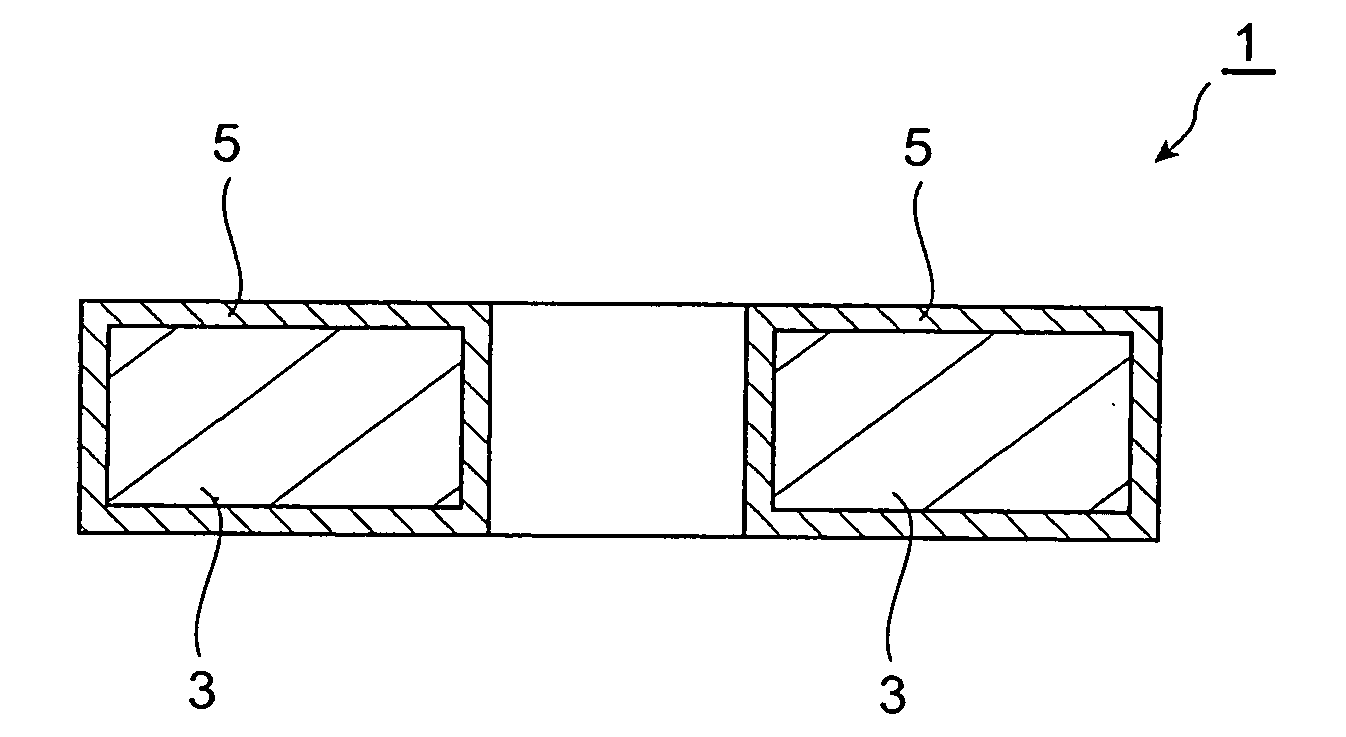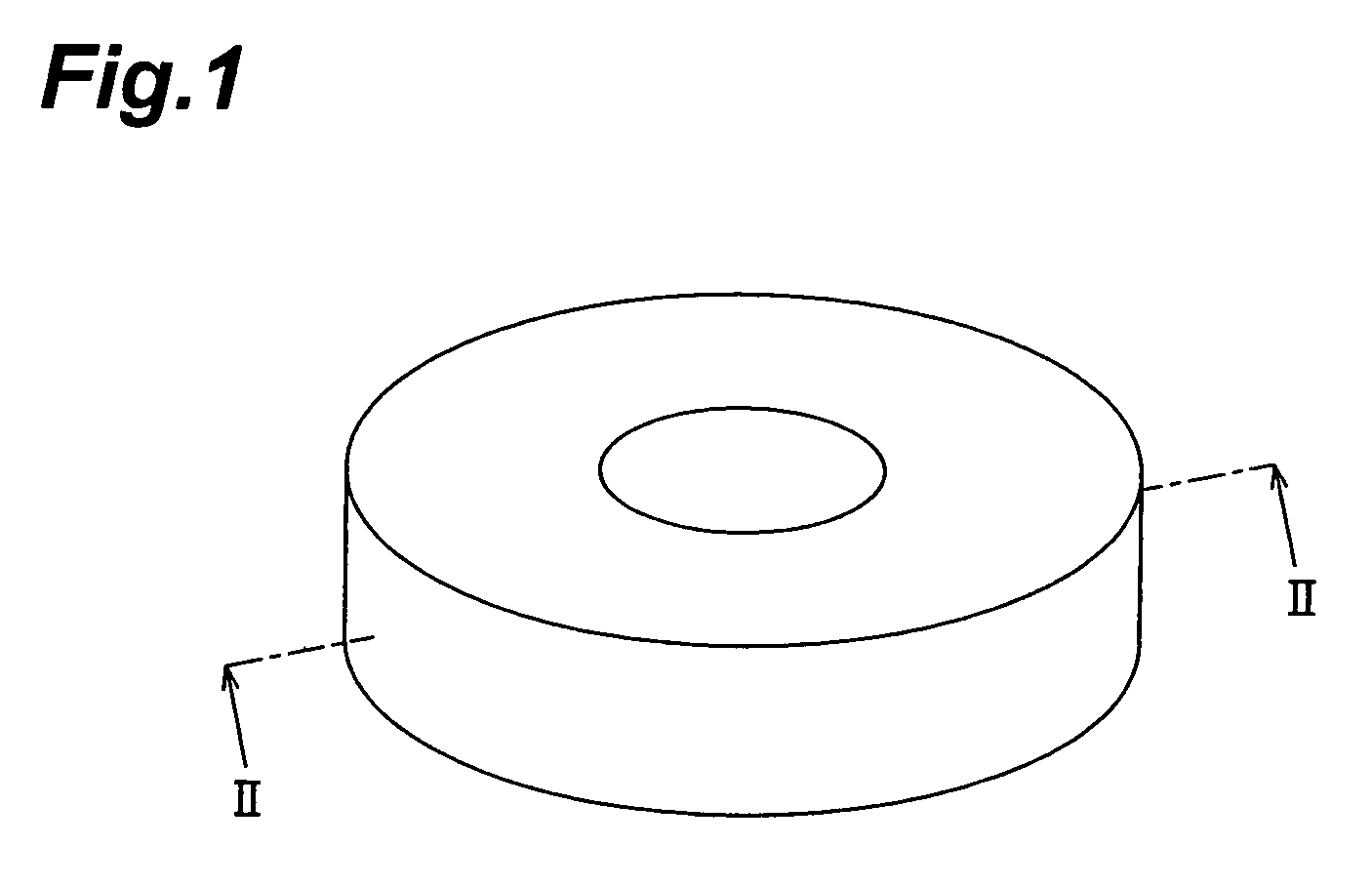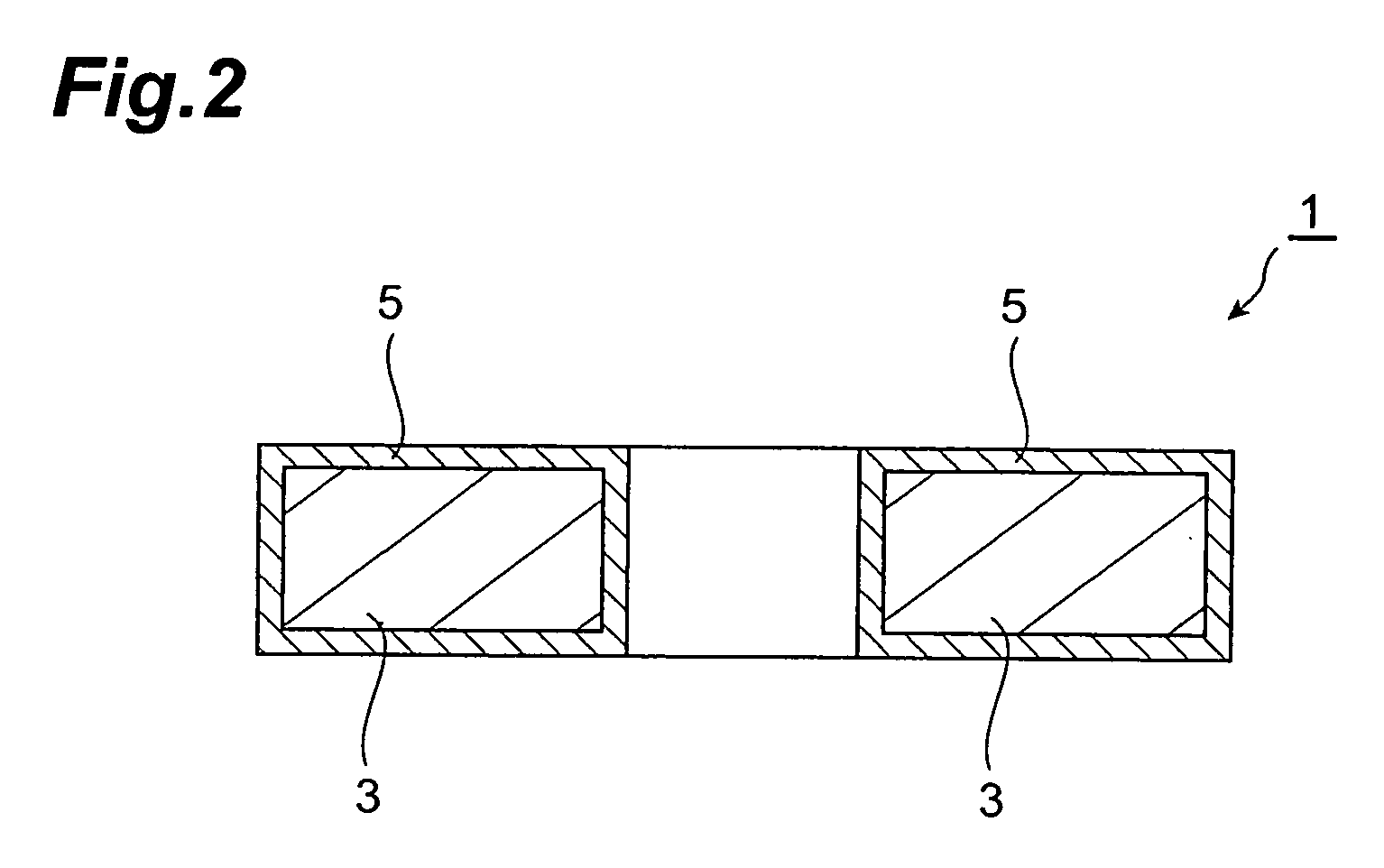Bonded magnet and process for its manufacture
a technology of bonded magnets and manufacturing processes, applied in the field of bonded magnets, can solve the problems of difficulty in achieving bonded magnets with adequate corrosion resistance and rust inhibiting performance, and achieve the effects of high corrosion resistance, convenient addition, and excellent properties
- Summary
- Abstract
- Description
- Claims
- Application Information
AI Technical Summary
Benefits of technology
Problems solved by technology
Method used
Image
Examples
examples
[0048] The present invention will now be explained in further detail by examples, with the understanding that the invention is in no way limited to these examples.
[Manufacture of Bonded Magnet]
examples 1-14
, Comparative Examples 1-4
[0049] An alloy comprising 72 wt % Fe, 19 wt % Nd and 7 wt % B was prepared and pulverized to obtain magnetic powder. This magnetic powder was mixed with an epoxy resin as a binder resin, and the mixture was compression molded under a pressure of 980 MPa and then heat treated at 150° C. for curing of the binder resin, to obtain a magnet body. The obtained magnet body was subsequently cleaned with ethanol and dried, and then immersed in a colloidal solution of titanium phosphate under reduced pressure for surface modification treatment.
[0050] Next, the magnet body was immersed in a chemical conversion treatment solution comprising zinc phosphate and the different additives listed in Table 1, and chemical conversion treatment was carried out according to the chemical conversion treatment solution temperatures and chemical conversion treatment times listed in Table 1 to form protective layers composed of chemical conversion coatings on the surfaces of the mag...
PUM
| Property | Measurement | Unit |
|---|---|---|
| particle size | aaaaa | aaaaa |
| particle size | aaaaa | aaaaa |
| pressure | aaaaa | aaaaa |
Abstract
Description
Claims
Application Information
 Login to View More
Login to View More - R&D
- Intellectual Property
- Life Sciences
- Materials
- Tech Scout
- Unparalleled Data Quality
- Higher Quality Content
- 60% Fewer Hallucinations
Browse by: Latest US Patents, China's latest patents, Technical Efficacy Thesaurus, Application Domain, Technology Topic, Popular Technical Reports.
© 2025 PatSnap. All rights reserved.Legal|Privacy policy|Modern Slavery Act Transparency Statement|Sitemap|About US| Contact US: help@patsnap.com



